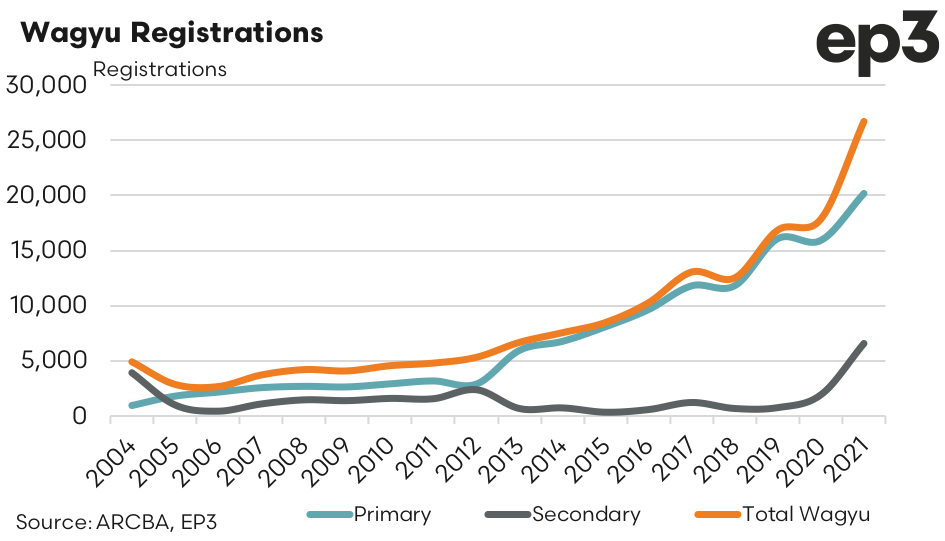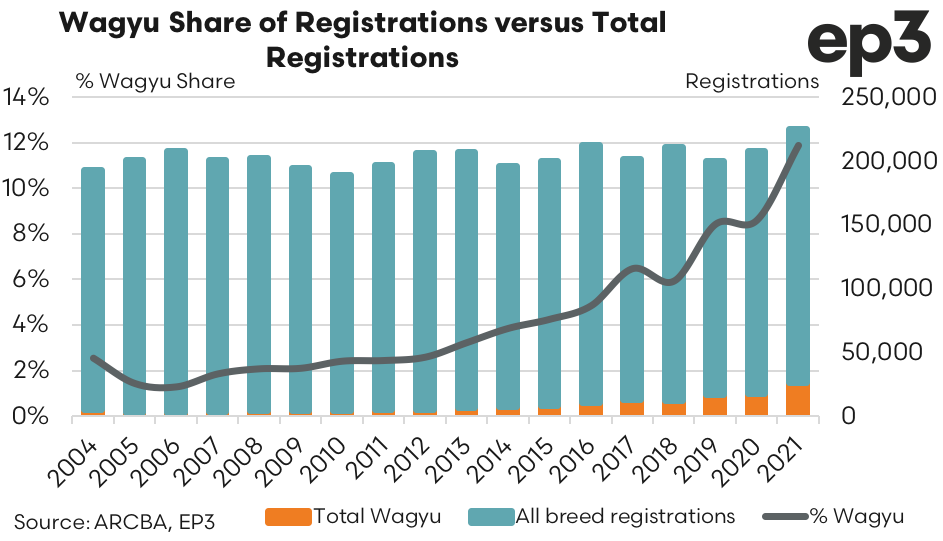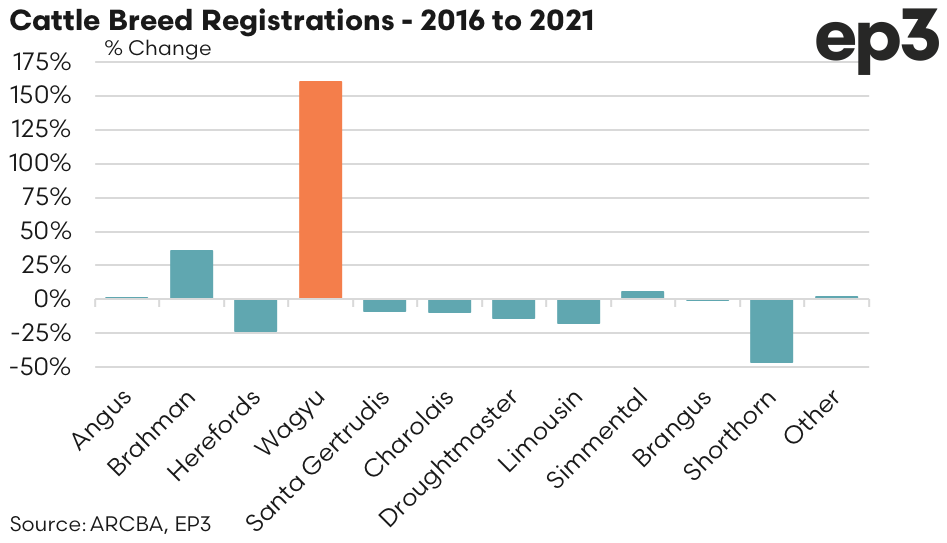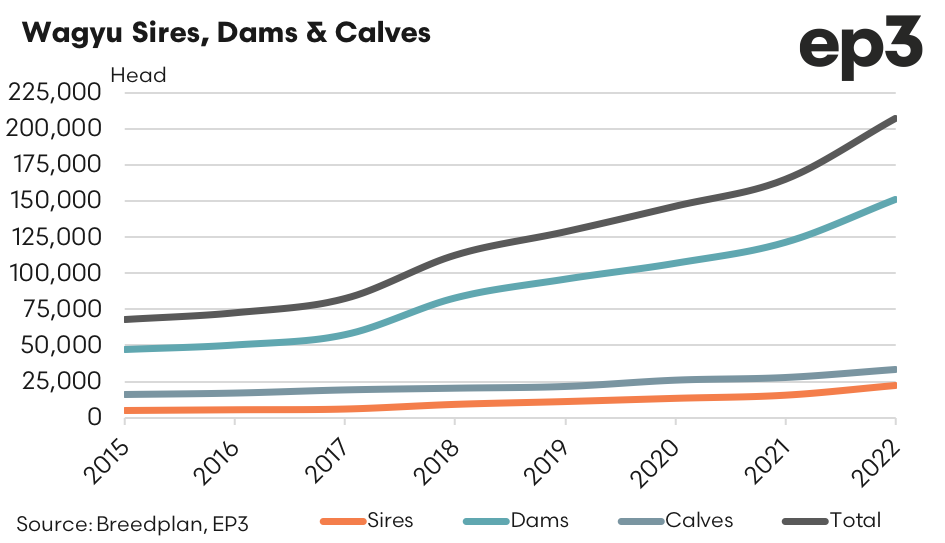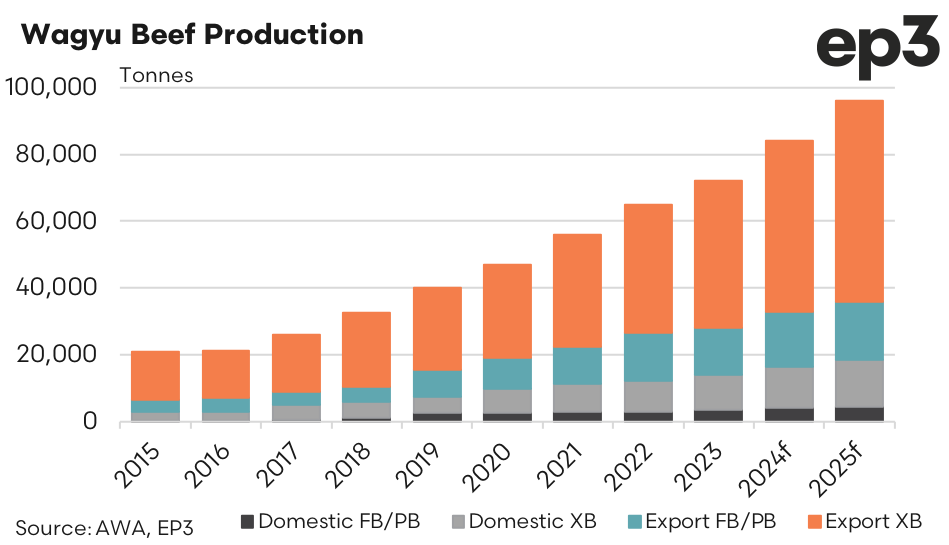May the fourth be Wagyu

The Snapshot
- ARCBA Wagyu registrations have seen a 50% lift from 17,848 head in 2020 to 26,708 in 2021.
- From 2016 to 2021 Wagyu registrations via the ARCBA increased by 160%.
- The AWA Breedplan program saw total numbers in 2022 moving above 200,000 head for the first time, which represents a 150% increase to the total Wagyu registrations of Sires, Dams and Calves, combined.
- As of 2025 AWA estimate that around 300,000 head of Wagyu will be processed, or around 96,000 tonnes of Wagyu beef produced annually, of which more than 80% will be exported.
The Detail
It’s hard to resist a Wagyu-Star Wars pun on May the fourth and a keen eyed observer would have noted our offering last year on 4th May 2022. The Australian Wagyu Association (AWA) just held their national conference in April, I’ll keep lobbying for it to be on 4th May every year and until they decide to change the date will have to suffice with today’s analysis.
Wagyu data on the supply side can be a little hard to come by, but we can start with the registrations of Wagyu cattle according to the Australian Registered Cattle Breeders Association (ARCBA) annual summary from 2021 which highlights a 50% lift in total Wagyu registrations over the year from 17,848 in 2020 to 26,708 in 2021, pointing to growing confidence in the sector.
A comparison of Wagyu registrations to other cattle breeds shows that the Wagyu share continues to climb from 8.6% of total ARCBA registrations in 2020 to 11.9% of total registrations in 2021. Indeed, the growth in registrations has been particularly evident when measuring from about 2016 onwards.
From 2016 to 2021 Wagyu registrations increased by 160%, dwarfing the next strongest growing cattle breed category by ARCBA registrations, the Brahman, which managed a “measly” 35% lift over the same time frame. Simmental showed a respectable 5.5% lift, while Angus and Brangus were almost unchanged.
Most of the remaining major breed types saw falls in registrations between 8% to 25%. However, Shorthorn cattle scooped up the wooden spoon with a fall in registrations of nearly 46% from 2016 to 2021.
The AWA Breedplan program has a more comprehensive list of Wagyu registered cattle with total numbers in 2022 moving above 200,000 head for the first time. The last five years have seen steady annual growth in Wagyu registrations on Breedplan, particularly for Sires & Dams.
Since 2017 Wagyu Sire registrations have increased by 285% and Wagyu Dams are up by 163%. Growth in Wagyu Calf registrations on Breedplan are still up a respectable 73% over the last five years. This represents a 150% increase to the total Wagyu registrations of Sires, Dams and Calves, combined, from nearly 83,000 head in 2017 to almost 207,000 head in 2022.
As cattle supply has increased so has Wagyu beef production, and pleasingly, this has also translated into increased flows into the beef export sector. AWA forecasts for Wagyu beef production and exports shows continued growth is expected as we head towards the middle of the decade.
As of 2025 it is estimated that around 300,000 head of Wagyu will be processed, representing around 20% of the national feedlot capacity. Around 96,000 tonnes of Wagyu beef will be produced, of which more than 80% will be exported.

